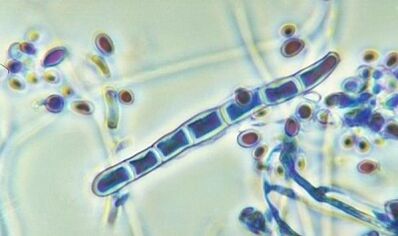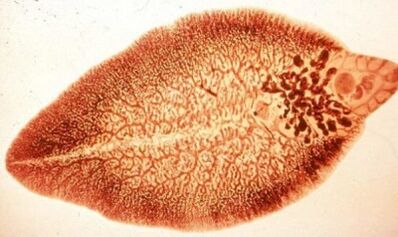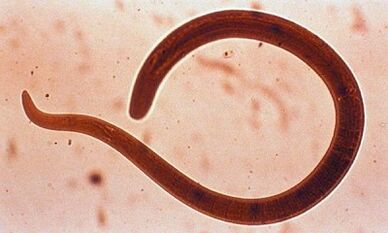Human parasites can inhabit all organ systems. The vital activity of helminths can become a prerequisite for the development of cancer, and microscopic fungi and mites lead to allergies.
The human body can be inhabited by at least 300 parasitic species, including representatives of bacteria, viruses, protozoa, microscopic fungi, helminths (parasitic worms), and individual arthropods. These organisms not only consume the nutrients assimilated by the host, but also poison it with the products of their vital activity. According to the canons of modern medicine, the concept of "parasite" does not apply to prenuclear (prokaryotic) organisms: bacteria and viruses. It is characterized by protozoa, fungi, worms, arthropods that live in the body of the host and exist exclusively on it.
Microparasites

Human and animal organisms are a fertile environment for the life of microscopic fungi as well as protozoa. They do not cause damage to the skin and internal organs with the naked eye.
Parasitic protozoa
The infection caused by protozoa is called protozoa. Such diseases are widespread in tropical areas as well as in temperate latitudes. Approximately 50 species of protozoa parasitize in human organs and tissues. They can be infected through sexual contact, food or insect bites.
Giardiasis is very common. Up to 40% of children and 10% of adults have this pathology. The lamblia's favorite habitat is the small intestine. The disease can be accompanied by digestive disorders, allergic reactions, although it is often asymptomatic. The pathogen is transmitted through food - unboiled water and contaminated food.
According to various sources, 30 to 50% of the world's population is infected with toxoplasmosis. Its pathogen often lives in the host organism without any clinical manifestations. Toxoplasma poses the greatest danger to pregnant women: it causes intrauterine fetal death or serious malformations. Infection occurs through contact with domestic mammals (cats, rabbits, rodents) and consumption of uncooked meat.
The most common sexually transmitted infection is protozoan. This is trichomoniasis. More than 150 million people are infected worldwide each year. The manifestations of the disease are determined by which organs are affected. In women Trichomonas lives in the vagina, causing inflammation, accompanied by urethritis. In men, protozoa affect the prostate, seminal vesicles, in severe cases leading to prostatitis, although more often the infection is asymptomatic.
Diseases such as malaria, leishmaniasis, Chagas' disease and sleeping sickness are widely known in the tropics. Their causes are plasmodia, leishmaniasis and trypanosomes. Parasites are transmitted by blood-sucking insects: mosquitoes, houseflies, triatomine bugs. By biting sick animals or humans, they acquire and distribute the causes of these diseases.
Parasitic fungi

About 100 species of fungi are known to be quite dangerous to humans. Their optimal habitat is warm and humid areas of the body, for example, interdigital spaces. However, these organisms can also infect the skin and other areas of the human body.
Fungi species Trichophyton, Microsporum, Epidermophyton cause dermatomycosis: lichen and pityriasis versicolor, lesions of the feet, scalp, rarely mucous membranes. The causative agents of these diseases can be transmitted to humans from animals or sick people. In severe cases, dermatomycoses are accompanied by bacterial infections.
Mold fungi and their spores are no less harmful to humans. They cause these diseases:
- penicellosis; mucosa;
- aspergillosis.
These pathologies are characterized by inflammation of all parts of the respiratory tract without exception, otitis media and various allergic reactions. In severe cases, parasitic fungi cause pneumonia as well as bronchial asthma. People with weakened immunity and chronic diseases are most susceptible to fungal infections.
Helminti
The favorite habitat of parasitic worms is the digestive tract of humans and animals, where they feed on digested food, bile and host blood. All helminths belong to the following classes:
- roundworms (nematodes);
- flatworms (tapeworms and flukes).
Flat parasitic worms
Eggs and larvae of trematodes (flatworm flukes) most often enter the human body with raw water, unwashed greens, insufficiently heat-treated meat and fish. Here's how:
- liver;
- Chinese
- div;
- lanceolate flukes;
- cat fluff.

Sometimes a person becomes infected by direct contact: the larvae of tropical schistosome parasites pierce the skin of people who swim in fresh water and then enter the bloodstream where they live and feed on erythrocytes.
Most trematodes affect the liver, gallbladder and ducts of these organs, causing diseases - trematodes. The living environment for pulmonary flukes are muscles, subcutaneous adipose tissue, the brain, but above all the lungs. The disease caused by this helminth is called paragonimiasis. A small trematode metagony lives in the small intestine, leading to metagonimosis.
Parrots are small in size - their flat leaf-shaped body does not exceed 10 cm - however, the consequences of their stay in the body of animals and humans are fatal. Prolonged parasitism of these helminths can lead to the development of cancer, cirrhosis and gallstone disease.
Unlike trematodes, the body of tapeworms (cestodes) can reach tens of meters in length. The main route of cestode infection is food. These helminths enter the human body with uncooked meat and fish. The main environment for the development of cestodes is the small intestine inhabited by adult worms, while the larval forms live in the parenchymal organs (liver, lungs, spleen).
Of all the ribbons, the most common are the following:
- bull tapeworm; echinococcus;
- wide ribbon;
- swine tapeworm;
- alveococcus.
Round parasitic worms
Diseases caused by parasitic roundworms - nematodes - rank first among all helminthiasis in terms of frequency of development. The habitat of most adult parasites is the intestines, but at certain stages of their lives they can migrate to the muscles, lungs, heart, and pharynx. The following nematodes predominate in the human population:

- pinworms;
- roundworm;
- toxocara;
- Trichinella;
- ankelije;
- Powerful fats.
Eggs and larvae of roundworms enter the human body through food and water. Nematodes such as ankylomia and stronglilids attack the host body on their own. These helminths are mainly found in the tropics.
Ubiquitous nematodes are pinworms, roundworms and toxocaras. The former most commonly affect children, causing enterobiasis - the most common helminthiasis. Dogs are carriers of Toxocare, although these nematodes can infect humans as well. Roundworms live in humans and are not dangerous to most animals except pigs.
Arthropod parasites
Cestodes, trematodes and parasitic nematodes are adapted to life in the internal organs of the host. In contrast, most parasitic arthropods live on the surface of the body. Most often, a person becomes infected with lice and mites, the causes of demodicosis and scabies. These parasites are dangerous because they can carry pathogenic bacteria and rickettsiae that cause bovine fever, typhus and relapse.
Lice drink human blood, and parasitic mites live on human skin. Scabies itching passes through the passages in it, demodex lives in the hair follicles and sebaceous gland ducts. The vital activity of these parasites leads to allergies, followed by rash, redness of the skin and itching.
The world we live in is evolving rapidly, living standards are constantly rising and today it seems to many that parasitic diseases are the inhabitants of third world countries. However, population migration leads to the spread of such pathologies beyond natural foci. In this regard, it is important to remember the basic rules of hygiene, the observance of which will help avoid infection.
























